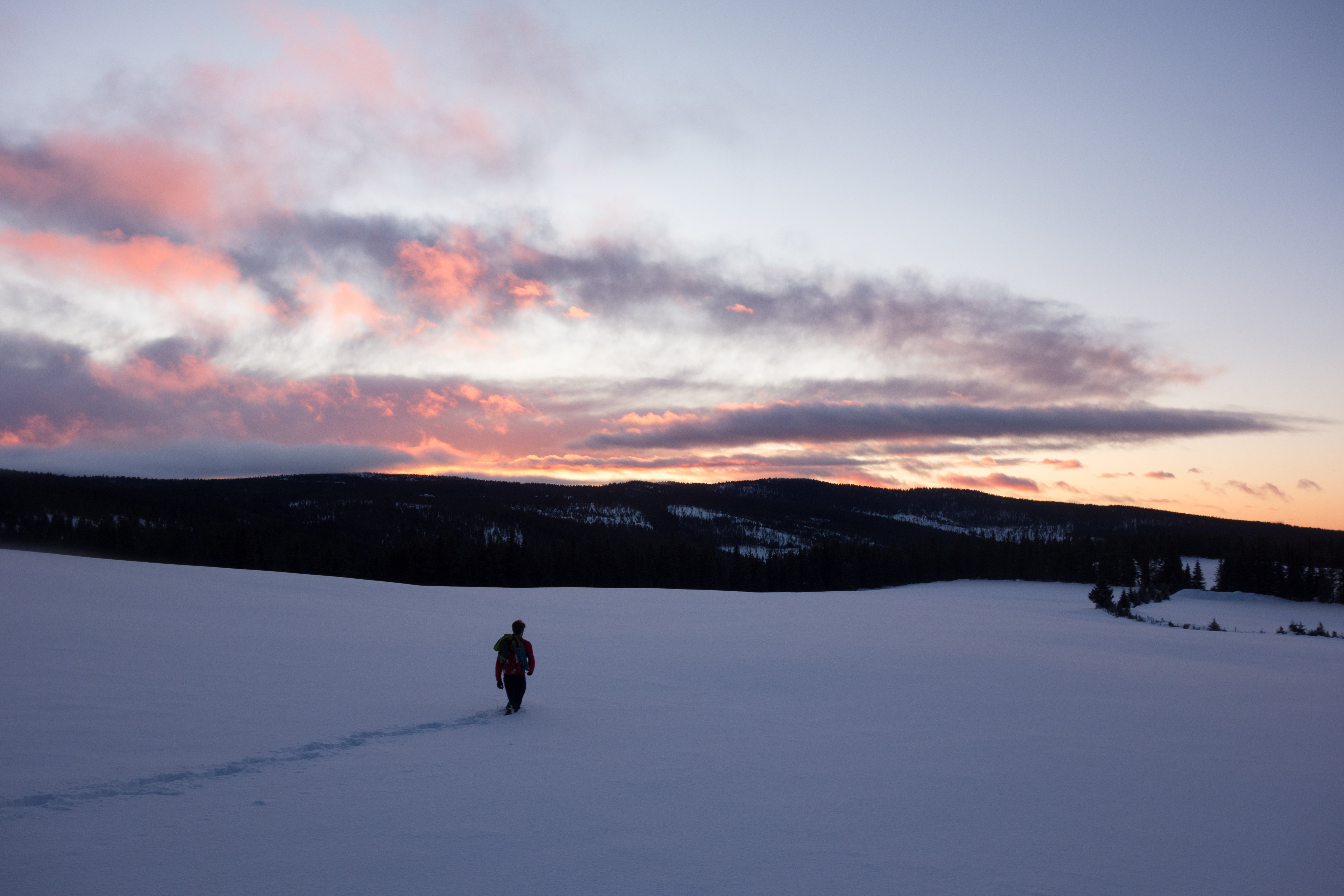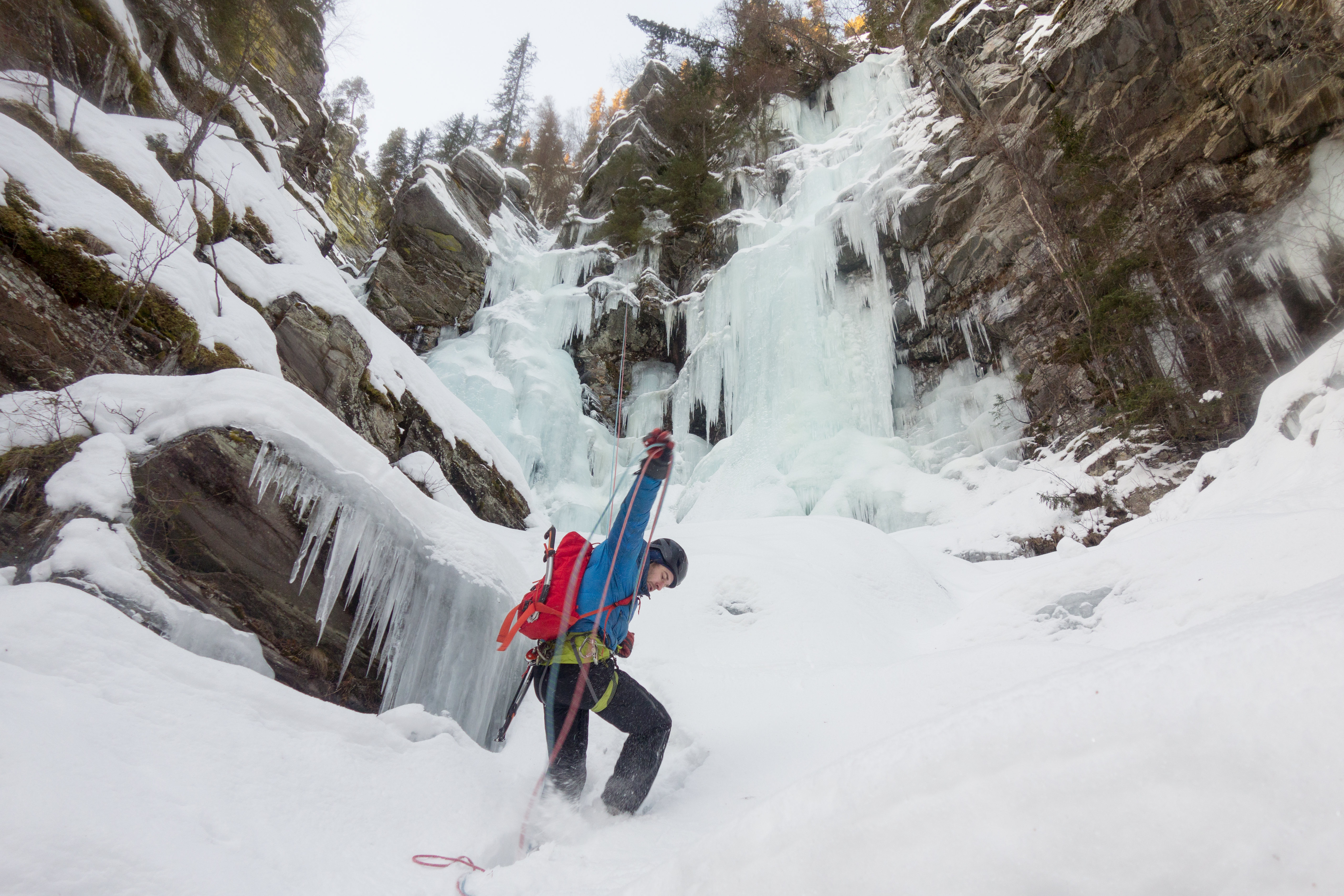Hardis (WI4+/5), Sørstulen
We sent the text, with the car registration details as described, waited for the barrier to lift, but nothing happened, apart from receiving a 200 kr invoice by SMS. It was 8:20am and the customer services were not available to speak to until 9am. I tried sending another text ten minutes later but it was the same outcome. Another invoice.
We waited patiently until 9am. Sending an angry email to the same customer services helped pass the time. Jeroen meanwhile Googled and tried several optimistic ways to trick the gate to open. None of these worked.
 |
| The barrier at the start of the road to Sørstulen |
At 9am there was no answer from customer services. I tried again at 9:15 before we gave up and instead headed to the ice routes at Minst Bekkene Bruse, with just the two 200kr invoices to show for our efforts. I sent another email asking that these be cancelled but I never got a response, or any chasing letters. I'm not convinced there is much, if any, staffing in relation to this barrier... FYI.
Unperturbed, we rose early on the Sunday and were in front of the gate by 7:55am. If the gate failed to open then we were prepared to walk the necessary 8.5km. I sent the text again, fully expecting no change to yesterday's outcome, but to our surprise the gate lifted after a brief wait.
The car made it up the sequence of hairpins that followed, but at mid-distance the road branching off right to Sørstulen had not been recently plowed. The wheels span with each successive run-up. The road wasn't particularly steep, but there was no let up in gradient and consequently little hope. We either needed to put the chains on or walk the remaining 4km. I hadn't used chains for a good few years. In fact the chains in the boot had been purchased for my previous car, although were likely still the right size. We risked using as much time faffing with the chains as the remaining approach would take on foot, and so the choice seemed simple. 4km on foot was in any case much better than the 8.5km that we were initially prepared to walk.
The ice at Sørstulen was 700m of post holing beyond the road, across the neighbouring field, with the way ahead illuminated by a beautiful sunrise.
 |
| The approach at sunrise |
It's approximately 200m of abseiling to reach the base of the routes at Sørstulen, although this was made easier due to still remembering the whereabouts of the abseil points. The impressive natural setting had been watered down in my memories though. I remembered the ice formations but I had forgotten the huge imposing prow of rock extending down the true right side.
We had no information about the current conditions, however I had climbed some fine ice in the general area the weekend prior, as well as inadvertently yesterday. The routes at Sørstulen were higher up, hidden from the sun, and so a likely safe bet. Routes neighbouring Hardis extended down to WI3+, and would offer an easier alternative if necessary. All these factors reduced the commitment level.
The state of the crux curtain on Hardis was the key bit of information that I was after. The route was originally graded WI4+, but it had looked like solid WI5 during my first visit in January 2017. The latest update graded the route WI4+/5 to reflect the varying difficulty. The first time around, the route had looked too sustained and featureless to contemplate, but I had since improved my ice technique and conditioning, meaning I was confident in taking on difficulties at either end of the grade spectrum. It was immediately apparent at first glance though that the curtain was much fatter and featured on this occasion.
Jeroen was happy to second the route, and I was equally happy to lead everything. The first pitch I knew to be around WI3+ but I opted to take the line of most resistance in order to warm up and get some confidence for the main pitch that would follow.
From the top of the first pitch there was a short transition pitch across a broad snowy step. We set a belay to the left of the main curtain, since this side looked the obvious line of weakness due to a shelf in the upper half shortening the sustained difficulties. The pitch trended at first up and rightwards across a smooth, steep slab to beneath the main curtain feature. Once on the steep ground the climbing quickly became more pumpy and time-consuming due to the brittle ice needing both a lot of effort and care to get the axes to stick securely. The climbing had looked like 4+ from the base, felt like 5 whilst on it, but ultimately looked like 4+ when I retrospectively looked at the length of the difficulties in our photos.
 |
| The first pitch (Photo by Jeroen Zee) |
From the top of the first pitch there was a short transition pitch across a broad snowy step. We set a belay to the left of the main curtain, since this side looked the obvious line of weakness due to a shelf in the upper half shortening the sustained difficulties. The pitch trended at first up and rightwards across a smooth, steep slab to beneath the main curtain feature. Once on the steep ground the climbing quickly became more pumpy and time-consuming due to the brittle ice needing both a lot of effort and care to get the axes to stick securely. The climbing had looked like 4+ from the base, felt like 5 whilst on it, but ultimately looked like 4+ when I retrospectively looked at the length of the difficulties in our photos.
 |
| The crux pitch up the second tier of ice (Photo by Jeroen Zee) |
With the hardest ice dispatched I made a belay on a comfortable ledge. This whole section of the climb looked to entail about 1.5 pitches, and so there was little point in stretching out the first length. The next pitch was easier, but still no pushover, and still enjoyable.
The one minor flaw with Hardis, compared to the central line called Godis, is the need to bash leftwards a short distance through the forest in order to finish up Godis. The route loses aesthetics points for this but it was a minor flaw. The natural continuation actually looked to be up and right, however this was just a short step, with not much ice and probably not great climbing. The Godis finish undoubtedly maintained the quality of climbing to the top, albeit via the diversion.
With one pitch remaining it was time to switch on the head torches, although I was at least back on familiar ground. I knew from the last visit not to get involved with the giant cauliflower features towards the left-hand side, however fun they looked, because they would be time-consuming and awkward to navigate through. I had needed to escape right on that occasion, to less pronounced features, and this time around I planned to keep right for the entirety.
The pitch started in moderately steep fashion but became more slabby a few metres higher. It played out as expected, although took a little time due to the hard, brittle ice conditions.
It was 7pm by the time we were both at the top of the route, meaning we were in for a late arrival back in Oslo. Not helped by us needing to detour via the cabin to pick up a pair of gloves that I had left. It was definitely a route better suited to Saturday but the barrier dictated the order of events. We at least had the last laugh.







This comment has been removed by the author.
ReplyDelete